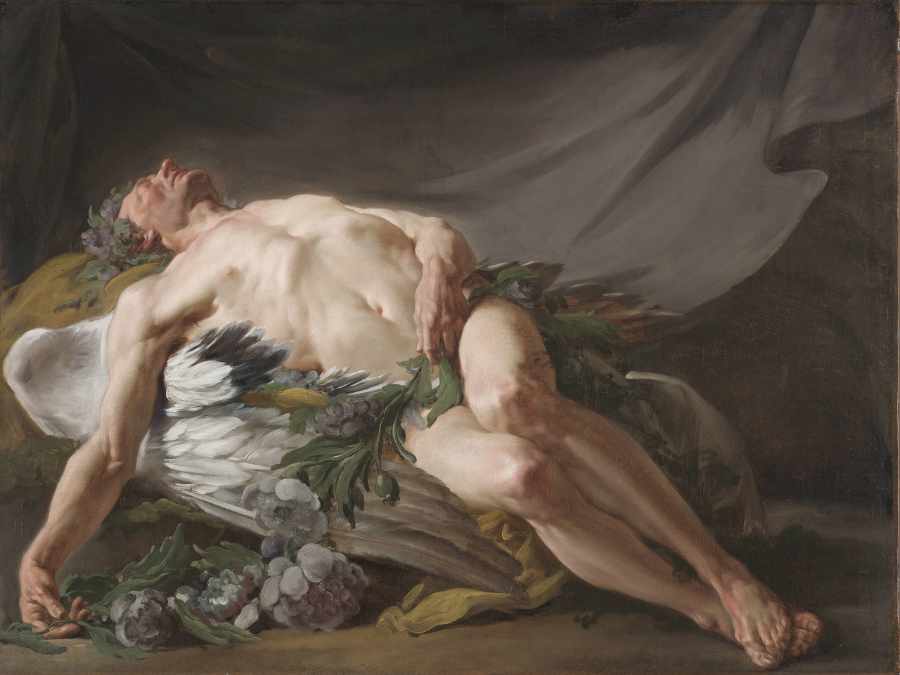Morpheus, or “Fashioner”, derived from the Ancient Greek meaning “form, shape”, is a god associated with sleep and dreams. In Ovid’s Metamorphoses he is the son of Somnus and appears in dreams in human form. From the Middle Ages, the name began to stand more generally for the god of dreams, or of sleep. According to Ovid, “no other is more skilled than he in representing the gait, the features, and the speech of men; the clothing also and the accustomed words of each he represents.” Like other gods associated with sleep, Ovid makes Morpheus winged. Ovid called Morpheus and his brothers, the other sons of Somnus, the Somnia (“dream shapes”), saying that they appear in dreams “mimicking many forms”. Ovid gives names to two more of these sons of Sleep. One called Icelos (“Like”), by the gods, but Phobetor (“Frightener”) by men, “takes the form of beast or bird or the long serpent”, and Phantasos (“Fantasy”), who “puts on deceptive shapes of earth, rocks, water, trees, all lifeless things”. The three brothers’ names are found nowhere earlier than Ovid, and are perhaps Ovidian inventions. Tripp calls these three figures “literary, not mythical concepts”. However, Griffin suggests that this division of dream forms between Morpheus and his brothers, possibly including their names, may have been of Hellenistic origin.
| Alias Morpheus, Hypnos, Oneiros, Fashioner |
| Real Names/Alt Names Morpheus |
| Characteristics Myths & Legends, Deity, Magic Caster, Prehuman Epoch, Greek |
| Creators/Key Contributors Unknown |
| First Appearance Greek mythology |
| First Publisher ○ |
| Appearance List Literature: Ovid’s Metamorphoses Book 11 (8 CE), Bulfinch’s Mythology by Thomas Bulfinch. Comics: Yankee Comics #1, Shadow Comics vol. 2 #4, 5, 8 (16, 17, 20), America’s Greatest Comics #8, Punch Comics #9, 11, 22. |
| Sample Read Bulfinch’s Mythology by Thomas Bulfinch [Internet Archive] |
| Description Morpheus, or “Fashioner”, derived from the Ancient Greek meaning “form, shape”, is a god associated with sleep and dreams. In Ovid’s Metamorphoses he is the son of Somnus and appears in dreams in human form. From the Middle Ages, the name began to stand more generally for the god of dreams, or of sleep. According to Ovid, “no other is more skilled than he in representing the gait, the features, and the speech of men; the clothing also and the accustomed words of each he represents.” Like other gods associated with sleep, Ovid makes Morpheus winged. Ovid called Morpheus and his brothers, the other sons of Somnus, the Somnia (“dream shapes”), saying that they appear in dreams “mimicking many forms”. Ovid gives names to two more of these sons of Sleep. One called Icelos (“Like”), by the gods, but Phobetor (“Frightener”) by men, “takes the form of beast or bird or the long serpent”, and Phantasos (“Fantasy”), who “puts on deceptive shapes of earth, rocks, water, trees, all lifeless things”. The three brothers’ names are found nowhere earlier than Ovid, and are perhaps Ovidian inventions. Tripp calls these three figures “literary, not mythical concepts”. However, Griffin suggests that this division of dream forms between Morpheus and his brothers, possibly including their names, may have been of Hellenistic origin. |
| Source Morpheus – Wikipedia |

